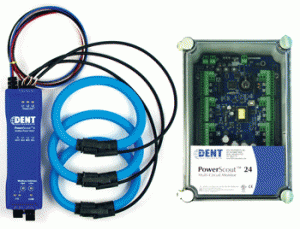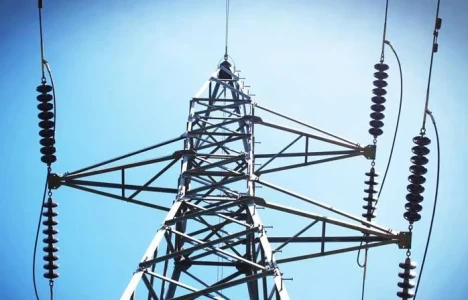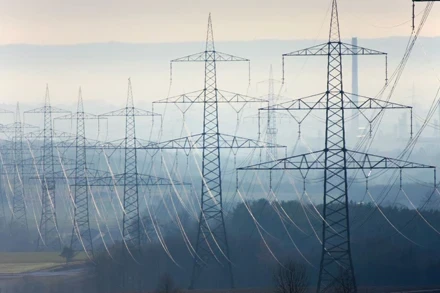Energy Efficiency Targets

Using real-time monitoring to reduce power consumption
BY TIM VAN SLAMBROUCK, DENT Instruments
Building automation applies computerized controls to manage the electrical systems of commercial, industrial, and institutional buildings, equipment such as fire, power, and security systems, as well as lighting. Building automation can help facilities reduce power consumption and cut operating costs. What can help in achieving the aforementioned goals is a comprehensive energy strategy.
The University Hospital Authority and Trust (UHAT) operates seven medical office buildings on the University of Oklahoma’s Health Science Center campus in Oklahoma City. In early 2012, the hospital was contemplating some changes to upgrade their HVAC (heating, ventilation, and air conditioning) systems and install automated controls. At the time, the building controls were a mix of disjointed pneumatic and direct digital control systems and UHAT facilities had no easy way of measuring the effects of energy conservation measures.
ES2, a local consulting firm providing comprehensive energy solutions, proposed an energy strategy focused on establishing a holistic solution that could unify the campus’s energy conservation projects. The consulting firm performed energy audits of the hospital’s facilities and proposed a strategic overhaul of the building controls.
The key component for any comprehensive strategy is a solid evaluation, measurement, and verification (EM&V) plan based on ability to measure energy use as it happens. Real-time performance data should drive decision making. According to the Ontario Power Authority, an EM&V plan is the blueprint for studies and activities aimed at “assessing the affects (for example, energy savings) and effectiveness of a conservation program on its participants and/or the market”.
In this case, the plan was to turn UHAT’s facilities into “smart buildings” by networking the hospital’s energy-consuming components together, and providing a means for building occupants and facilities managers to easily monitor current consumption and assess the effects of the hospital’s energy-saving measures. The specified solution involved implementing strategic tools including WebCTRL provided by Automated Logic and metering devices from DENT Instruments (refer to Figure 1). Making energy consumption information available to the necessary individuals who can affect that consumption can be a key to achieving considerable savings.

CHOOSING A CONTROL SYSTEM
The completed energy strategy for UHAT included the installation of new building automation systems that utilize BACnet, a data communication protocol for building automation and control networks that was developed under the auspices of the American Society of Heating, Refrigerating, and Air-Conditioning Engineers (ASHRAE). Among the benefits of an industry standard interface is interoperability, whereby best-in-class system elements such as sensors, switches, and motor drives can be interfaced, and the ability of compatible devices to communicate is assured.
CHOOSING POWER METERS
Integrated submetering was required to monitor power consumed by each one of the UHAT buildings in order to enable the system to monitor peak electrical demand in real time. For connectivity, BACnet-ready devices were also required, since many measurement points were involved. Essentially, a solution was needed that offered a lower cost per monitoring point for monitoring power use of individual building floors.

Single-point, three-phase submeters that communicate using either BACnet or Modbus protocols were installed in seven buildings across the campus at the main power feed level. Multi-channel power meters that can monitor up to 24 different consumption points were installed to monitor the power consumption of individual floors (one 24-channel metering device could record power consumption by HVAC, lighting and outlet circuits on about two and a half floors in a UHAT hospital building). Figure 1 shows the metering devices. With the meters in place (refer to Figure 2), operators can access live energy consumption data for each access point, showing the performance of each metered circuit.
DID YOU KNOW
Some modern building control systems offer an operator interface that can show at a glance the status of building control points, which enables operators to make changes to system operation (refer to Figure 3).
ENERGY CONSERVATION PROGRAMS
A behavior-based energy conservation program is an integral part of a comprehensive energy strategy. The State of Oklahoma mandates that all state agencies cut their energy use by 20 percent by 2020. A strategy that can help increase awareness and to create energy saving behavior can show benefits.

The University Hospital Authority and Trust’s executive team launched a behavior-based energy efficiency improvements campaign where their medical staff members were encouraged to power down lights and computers when not in use, as well as to review use of medical equipment. A friendly competition between building occupants was officially launched once enough accumulated data was available for baseline comparison. Competition proved to be successful with clinics proactively engaged in identifying ways to lower their energy use. In two months, total electric consumption was reduced by six percent.
LAST LOOK Public institutions and commercial facilities can achieve sustainable energy efficiency targets with a comprehensive energy strategy based on capabilities and data from advanced controls and monitoring equipment. A comprehensive energy strategy can help facility managers and building owners see a return on their investments within five years. As the industry mantra goes, you cannot improve what you cannot measure.








